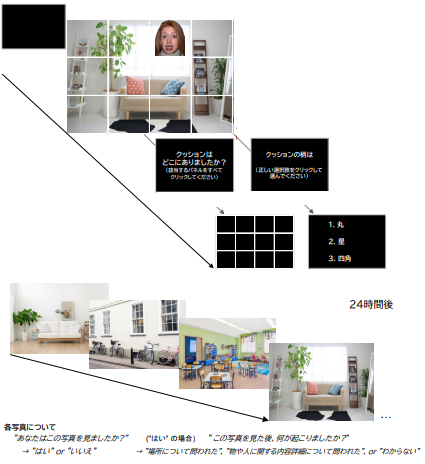2024-10-31 スイス連邦工科大学ローザンヌ校(EPFL)
<関連情報>
- https://actu.epfl.ch/news/neurotechnology-boosts-memory-without-surgery/
- https://www.science.org/doi/10.1126/sciadv.ado4103
- https://www.pnas.org/doi/10.1073/pnas.2315758121
ヒトの空間ナビゲーションにおける海馬-嗅内野複合体の非侵襲的変調 Noninvasive modulation of the hippocampal-entorhinal complex during spatial navigation in humans
Elena Beanato, Hyuk-June Moon, Fabienne Windel, Pierre Vassiliadis, […], and Friedhelm C. Hummel
Science Advances Published:30 Oct 2024
DOI:https://doi.org/10.1126/sciadv.ado4103

Abstract
Because of the depth of the hippocampal-entorhinal complex (HC-EC) in the brain, understanding of its role in spatial navigation via neuromodulation was limited in humans. Here, we aimed to better elucidate this relationship in healthy volunteers, using transcranial temporal interference electric stimulation (tTIS), a noninvasive technique allowing to selectively neuromodulate deep brain structures. We applied tTIS to the right HC-EC in either continuous or intermittent theta-burst stimulation patterns (cTBS or iTBS), compared to a control condition, during a virtual reality–based spatial navigation task and concomitant functional magnetic resonance imaging. iTBS improved spatial navigation performance, correlated with hippocampal activity modulation, and decreased grid cell–like activity in EC. Collectively, these data provide the evidence that human HC-EC activity can be directly and noninvasively modulated leading to changes of spatial navigation behavior. These findings suggest promising perspectives for patients suffering from cognitive impairment such as following traumatic brain injury or dementia.
空間的自己意識の変化が、嗅内皮質におけるグリッド細胞様表現を誘発する Changes in spatial self-consciousness elicit grid cell–like representation in the entorhinal cortex
Hyuk-June Moon, Louis Albert, Emanuela De Falco, +3, and Olaf Blanke
Proceedings of the National Academy of Sciences Published:March 15, 2024
DOI:https://doi.org/10.1073/pnas.2315758121

Significance
Grid cells in the entorhinal cortex (EC) encode self-location, relying on environmental and multisensory bodily cues. Importantly, multisensory signals from the body play a crucial role in shaping our sense of self, and illusory changes in perceptual self-location can be induced by experimental manipulations of these signals. However, until now, it was unknown whether such illusory changes are associated with corresponding changes in the grid cell-related activity in the EC. In this study, we reveal that they elicit grid cell–like activity similar to that observed during conventional virtual navigation, but without any changes in viewpoint. This constitutes a human study demonstrating that grid cell–like representation can be induced based on multisensory bodily cues, extending beyond classical visual cues.
Abstract
Grid cells in the entorhinal cortex (EC) encode an individual’s location in space, integrating both environmental and multisensory bodily cues. Notably, body-derived signals are also primary signals for the sense of self. While studies have demonstrated that continuous application of visuo-tactile bodily stimuli can induce perceptual shifts in self-location, it remains unexplored whether these illusory changes suffice to trigger grid cell–like representation (GCLR) within the EC, and how this compares to GCLR during conventional virtual navigation. To address this, we systematically induced illusory drifts in self-location toward controlled directions using visuo-tactile bodily stimulation, while maintaining the subjects’ visual viewpoint fixed (absent conventional virtual navigation). Subsequently, we evaluated the corresponding GCLR in the EC through functional MRI analysis. Our results reveal that illusory changes in perceived self-location (independent of changes in environmental navigation cues) can indeed evoke entorhinal GCLR, correlating in strength with the magnitude of perceived self-location, and characterized by similar grid orientation as during conventional virtual navigation in the same virtual room. These data demonstrate that the same grid-like representation is recruited when navigating based on environmental, mainly visual cues, or when experiencing illusory forward drifts in self-location, driven by perceptual multisensory bodily cues.


